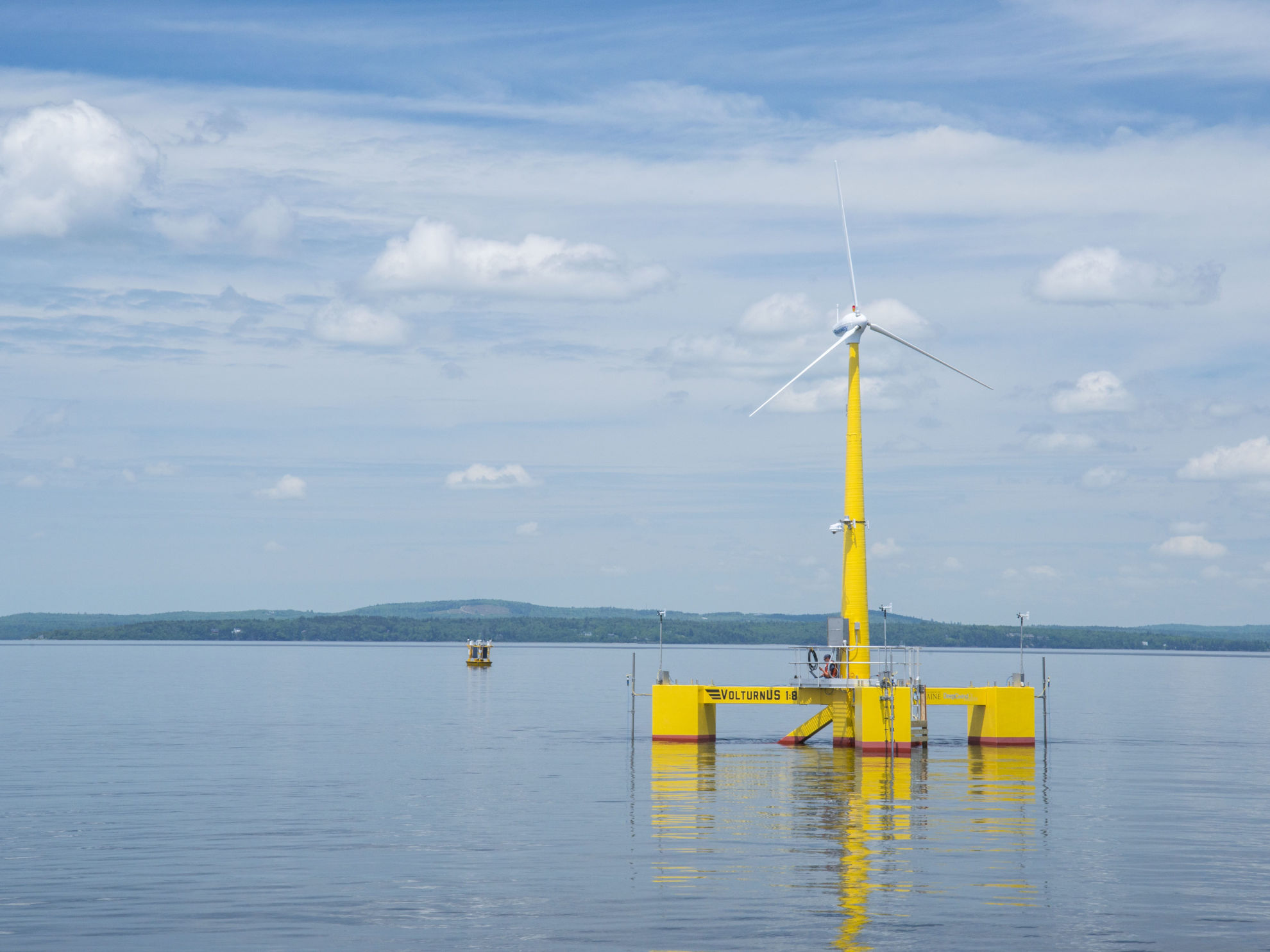Northeast state's move to hold first offshore wind auctions next year gives fresh updraft to pioneering technology being fine-tuned for country's flagship deepwater project, writes Darius Snieckus
Ten years after a small floating wind prototype was towed out off the north-east US state Maine for first trials, the technology is now primed to take up a leading role in an energy transition vision that sees gigawatts of arrays being developed to spearhead a plan to be powered purely by renewables by 2040 – and at the same time help accelerate the Biden administration's campaign to harness the American Atlantic’s vast deepwater wind resource.
Maine last month passed a landmark bill mandating 3GW of offshore wind capacity be up-and-running by 2040 and, hand-in-hand, set out measures to build an assembly and staging port for lead-off projects to establish the state as a regional offshore wind supply chain hub. That gigawattage, which would power 900,000 homes, is low-hanging fruit: by Bureau of Ocean Energy Management (BOEM) calculations almost 120GW of plant could be built in the wind energy ‘call area’ it unveiled ahead of a flagship auction slated for next year.
It has nonetheless been a long and storm-tossed journey for floating wind in Maine, with market set-backs and backsliding timelines challenging progress on the platform concept that has been at the heart of the play, the VolturnUS, brainchild of US sector pioneer Habib Dagher, who with his team at the University of Maine has been developing the concrete tension-leg platform design for almost 15 years.
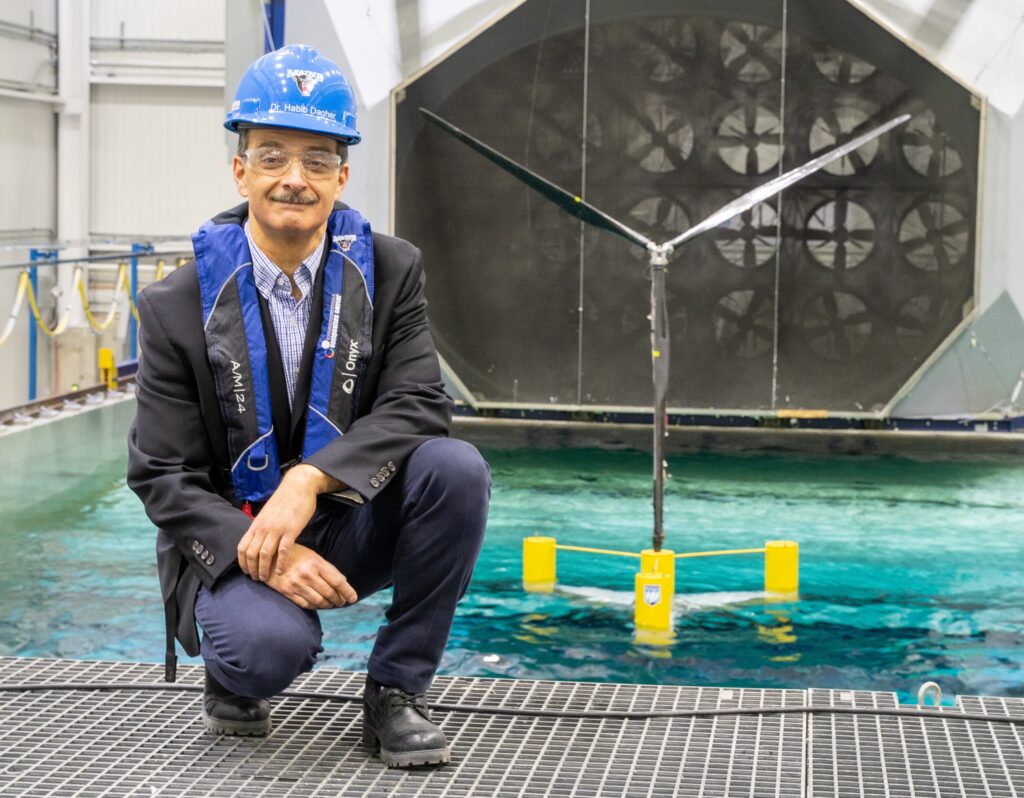
“This auction coming after the procurement bill as it is, the timing couldn’t be better. I think, after all this time, the Gulf of Maine is going to see a lot of activity take shape quickly here in the next couple years,” says Dagher, who based out of The University of Maine (UMaine)’s Advanced Structures and Composites Center in Orono.
'Stars appear to be aligning'
“The stars appear to be aligning right now and a lot of elements are falling into place. It feels very much like a turning point. But there is still a huge amount of work to be done, not least building a first port facility of this magnitude and scale to help our industry progress forward.”
Central to that progress will be the New England Aqua Ventus (NEAV) development, a 144MW project constructed around an arrays of VolturnUS hulls topped with 15MW turbines in the Gulf of Maine that has been backed by German utility RWE and Mitsubishi-subsidiary Diamond Offshore.
For the array, on-track to be powered up in 2030-31, will be not only a showcase to a further 20 developers currently in discussion with the NEAV project team of the technology in action, it will also serve to demonstrate how serial manufacturing of floating wind power units will work using the new-look construction infrastructure needed to build the fleets to come.
“These hulls will be made in concrete locally, not transported from around the world. That means local jobs and economic development. Supply chain development is effectively as important as the technology’s development and deployment,” says Dagher, who adds that he expects a first floating wind port could be ready “by Q4 2029”.
Boosting Biden's offshore wind 'national goal'
The US government’s ambitions for floating wind have grown steadily since the announcement by the White House in 2020 of a “national goal” of 30GW of offshore wind plant by 2030. Along with a floating wind ‘earth shot’ that aims to see the technology’s levelized cost of energy whittled down 70% to $45/MWh by 2035, BOEM has opened up waters off California, the Central Atlantic deeps and the Gulf of Mexico to gigascale leasings.
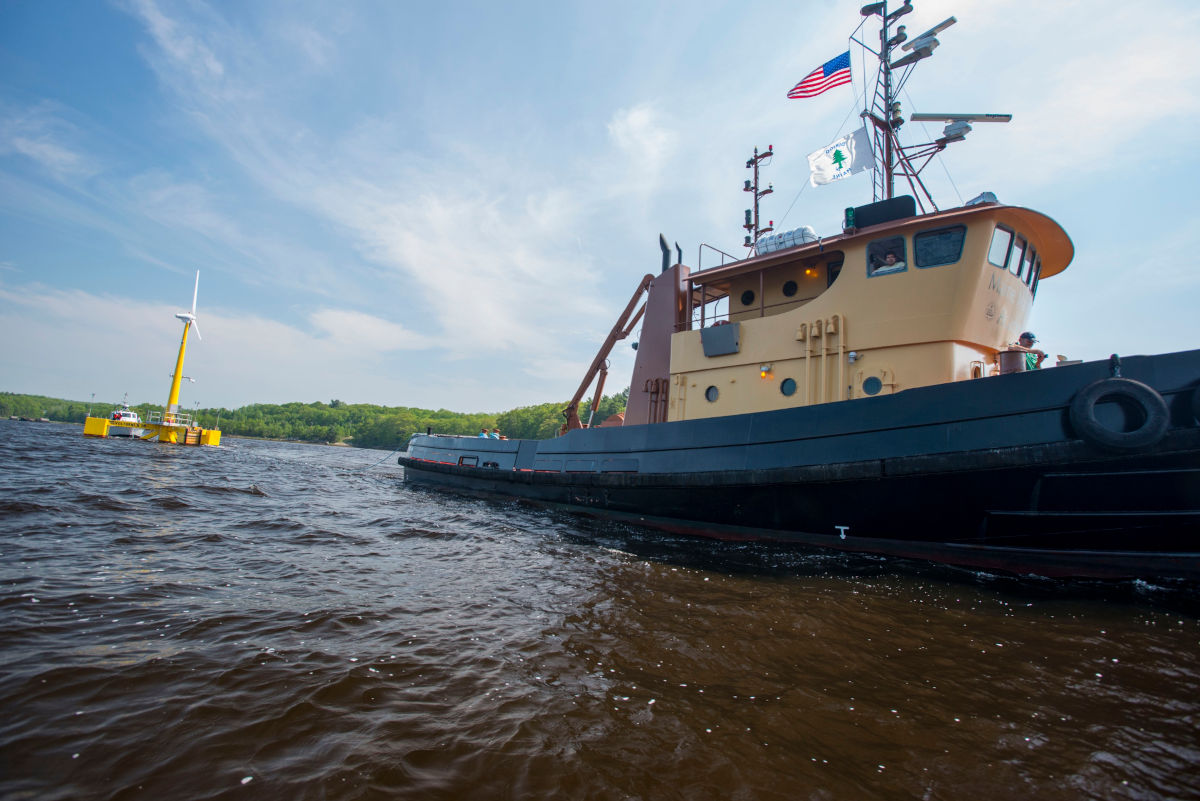
“There is a major push in Washington to accelerate development of floating wind – let’s not forget floating wind is one of only five [Biden administration] ‘earth shots’ – and this is a directional goal, it’s a challenge. We are already seeing many areas of cost reductions as they will become very apparent as we go from pilot to gigawatt-scale.
“Scale matters [in terms of power capture] and supply chain sustainability in the economics of a floating wind technology. But ultimately the technology is not driving the cost of projects: it’s the supply chain and inflation and interest rates and so on. Those market forces are hard to predict.”
Lighter and 'more compact' design
The next-generation version of the VolturnUS, which has been streamlined to be 30% lighter and more compact than the original design with help from US government R&D funding, will be deployed as a part-scale model next year off Moneghan Island, followed by deployment of an up-sized unit in 2026.
On the floating wind hot-button topic of whether the sector’s commercialization from the 250MW turning today to the 300GW in the global project pipeline hinges more on innovation and 20MW (and perhaps larger) turbines or ramp up of industrialization using field-proofed 10MW models, Dagher believes “a tipping point has been reached”.
“What exactly in terms of turbine size that is, we shall see. But yes, why when we have 15MW turbines operating today we don’t focus more significantly on industrialization of a floating version? It is a good question,” he says.
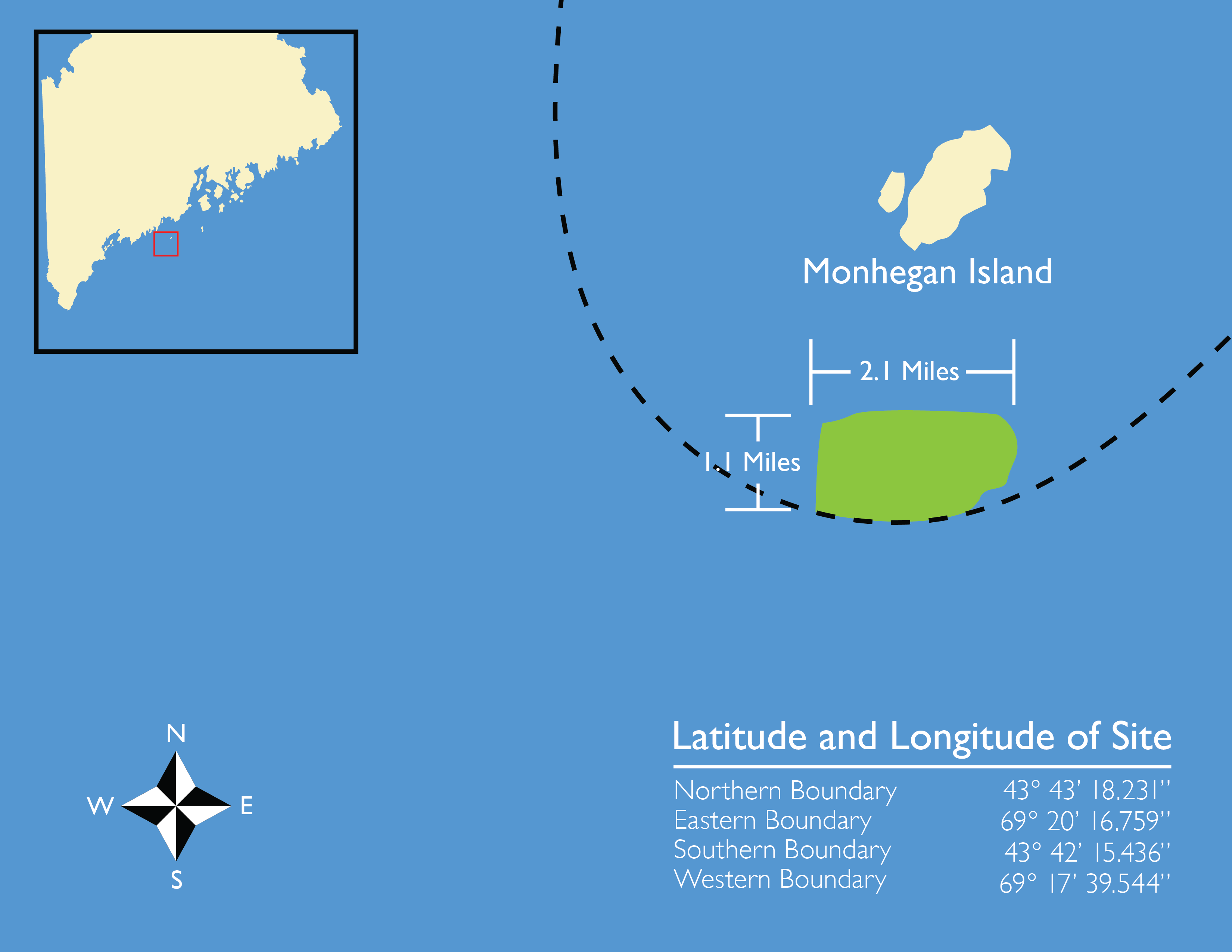
“Sure, we have designs for 20MW and 25MW turbines but these will create a whole new set of questions when it comes to port requirements and the regular investments to upgrade these facilities for still bigger machines.”
Floating wind power 'plus'
Though tightly focused on progressing the next-generation VolturnUS design and getting the NEAV project – which could well be the US’ first-ever floating wind array – into operation, Dagher is also giving over to longer-term thinking on the part the technology could play in Maine beyond being a direct source of clean electricity to the grid, including to power aquaculture operations.
“We have been working on co-locating aquaculture and floating wind projects for several years,” he states. "The future of the fisheries and seafood sectors is changing with global warming. Looking to what’s ahead, I think, and how floating wind fits in, gives us a chance to be able to prepare and to work together to develop new solutions for their businesses.”
There is also a marquee role for floating wind to grow into off the US north-east as governments look beyond maritime boundaries to balance demand and supply of green power. The latest project exploring interconnection of the Canadian Maritimes with the Gulf of Maine – and the markets in major conurbations such as New York, Boston and Philadelphia – was recently unveiled by a cadre of pioneering offshore wind developers which envisages a 2GW floating wind-powered voltage direct current trunkline running 621 miles (1,000km) along the Atlantic coastline.
“This is another conversation that we have been having for over 10 years: getting political alignment is very difficult in this area. But there is a real opportunity here, beyond all the offshore and floating wind we could built, you have a fantastic Canadian hydropower resource that would be used for firming transmission to the grid. That is a potent combination.”
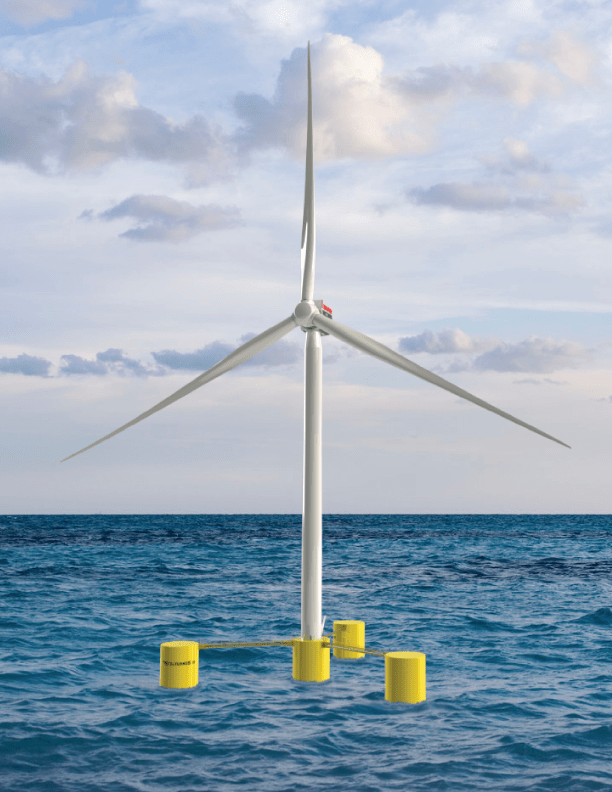
“Add hydrogen production [from floating wind power] to the mix – the sky’s the limit."
Most crucial now, Dagher says, is to “move forward with the steps we have been working long and hard to be able to take” as the new demo units head for the water and plans for NEAV start to crystallize.
“I think we are really in a good shape to move forward quickly in the next decade: we have the demonstrators, then the 144MW [NEAV] array, and then we can go gigawatt-scale. [Step-wise] is the right approach. Because we don't want to go out there and plan gigascale farms today that maybe have not thought about hydrogen production, for example, or co-locating with a mussel farm.
"We need to use all the experience we have and make sure we plan today to try to move this industry forward in the best way tomorrow.”
This article was first published in Aegir Insights' offshore energy intelligence newsletter, Beaufort.
Delivered straight to your inbox every Sunday, Beaufort will help sharpen your market insights for the week ahead with exclusive commentary, analysis, and in-depth journalism delving into the talking points and technologies shaping offshore wind.
